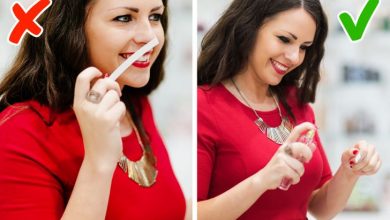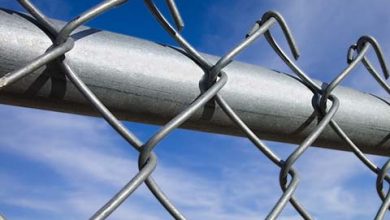Common Types of Coating of PPGI Coil

PPGI coil is also called prepainted galvanized steel coil. Like PPGL steel, it is a kind of building material, which belongs to color coated steel. After pretreatment (degrease and chemical treatment), the base metal is coated with organic paintings, then fired and cooled. So it enjoys wide popularity due to its strength and beauty. For one thing, the galvanizing process provides good coating adhesion and weldability; For another, the organic coating on the surface acts as protective insulation from rust, which extends its service life. Also, it offers more beautiful color options. The diverse paints and base substrates offer more colours and material properties to meet specific needs. Here are the main common coatings of PPGI steel.
Common Coatings of PPGI Coil
Top Paint: PVDF, HDP, SMP, PE(Polyester).
Primer Paint: Polyurethane, epoxy, PE.
Back Paint: Epoxy, modified polyester.
Let’s review their features one by one.
In order to understand it well, let’s learn the PPGI coil structure first. PPGI steel contains base metal (cold rolled steel sheet), zinc coating, pre-treatment (chemical conversion coating), primer coating, and top/back coating.

The pre-treatment process is:
Degreasing → Brushing → Hot water washing → Surface adjustment → Hot water washing → Passivation → Drying
After pre-treatment, the coating of one or more layers of liquid coating will be applied by roll coating, and finally baking and cooling. Using hot-dip galvanized steel sheets as the base material of colour coating steel can prolong the service life with the protection of the zinc layer and organic coating. While there is also a kind of color coated steel with cold galvanized sheet for the substrate and then is coated with organic coating. Because the zinc layer of electro-galvanized sheet is thin, it is not suitable for use in outdoor wall panels, roof panels, etc. The common coatings include polyester (PE), silicon modified polyester (SMP), high durable polyester (HDP), and polyvinylidene fluoride (PVDF). It is mainly used in the advertising industry, construction industry, electrical appliance industry, furniture industry and transportation industry. While for the different use environments, you’d better choose the suitable coatings.

Features of Common Coatings of PPGI Coil
1. Polyester (PE)
Advantages: Good adhesion, rich colours, good formability and durability, medium chemical resistance, and low cost. Polyester is a category of polymers that contain the ester functional group in every repeat unit of their main chains. As a thermoplastic elastomer, it is widely used in various industries since it was discovered. It owes good adhesion and is not strict in formability and outdoor durability. At the same time, some certain degree of chemical resistance can be seen. So it is commonly employed in PPGI products at a low cost.
2. Silicon Modified Polyester (SMP)
Good wear resistance and heat resistance, as well as good external durability and resistance to powder, gloss retention, moderate flexibility, and medium cost.
Silicon Modified Polyester is a silicon resin modified Polyester paint coated and heat dried. It guarantees good hardness, wear resistance, heat resistance, chalking resistance, as well as good external durability. But its lustre retention and flexibility are not very high. And it costs a little higher than PE. In general, SMP products are coated and baked with paint containing silicon resin, which is suitable for coastal areas. So this kind of PPGI coil can be more applied to seaside environments.

3. High Durable Polyester (HDP)
Excellent color retention and UV resistance, excellent outdoor durability and anti-powder resistance, good adhesion of paint film, rich colours, and excellent cost performance.
It is a weather proof resin developed with hydrogenated monomer & neo structure monomer. Similar durability to PVDF, but it offers a more competitive price and advantages of various colours & gloss. In a word, it is much better than PE but a little lower than PVDF. What’s more, it inherits SMP’s good points and adds some new benefits like UV resistance and higher adhesive force. It can be obtained in a cost-effective way. And more color options make it appreciated by more and more people.
4. Polyvinylidene Fluoride (PVDF)
Excellent colour retention and UV resistance, excellent outdoor durability and powder resistance, excellent solvent resistance, good formability and dirt resistance, but limited colours and high cost.
This coating, made by fluorine carbon resin, pigment and ester solvent, is solidified to dry film with super weather resistance after high temperature roasting and baking. It assures high weatherproofing against acids and heat and has high durability and machinability. Also, the hydrophillic surface treatment will enable dust to be removed easily and always keep clean. PVDF is especially opposed to solvents, abrasion, UV, and chalk, and has low density compared to similar fluoropolymers. It is much superior to the other three coatings, accompanied by the high cost.

How to Choose Coatings?
Microscopically, the coating is a porous structure. Water and corrosive media (chloride ions, etc.) in the air will invade through the weak part of the coating, causing sub-film corrosion, and then the coating will foam and peel off. In addition, even with the same coating thickness, the secondary coating is denser than the primary coating. According to relevant corrosion test results, the top coating of 20 μm or more can effectively prevent the intrusion of corrosive media.
Due to the different anti-corrosion mechanisms of primer and topcoat, the corrosion resistance of colour-coated steel is balanced when the primer coating is ≥ 5μm and the top coating is ≥15μm. While PVDF coating requires thicker coatings to guarantee longer service life. The requirements for the back coating depend on the application. The sandwich panel only requires one layer of primer that can be bonded, while the formed steel plate also requires two layers with a thickness of at least 10 μm due to the indoor corrosive environment.
Top Coatings of PPGI
The topcoat is mainly determined according to factors such as use, environmental corrosion, service life, durability, processing method and degree of deformation. The commonly used topcoats are polyester, silicon-modified polyester, high-durability polyester and polyvinylidene fluoride.
Polyester is currently the most widely used coating, with average durability, good hardness and flexibility of the coating, and moderate price. Silicon-modified polyester has improved durability and gloss and colour retention but slightly reduced coating flexibility. High-durability polyester combines the advantages of polyester with improvements in durability and is cost-effective. Polyvinylidene fluoride has excellent durability, and good flexibility of the coating, but relatively low hardness, less colour available and is expensive.

Primer Coatings of PPGI
The primer coating is usually determined by the manufacturer based on the production process, application, environmental corrosivity, and matching relationship with the topcoat. Commonly used primers are epoxy, polyester and polyhelium ester, and there are certain differences in adhesion, flexibility and corrosion resistance of different primers.
Epoxy has good adhesion to the substrate and high corrosion resistance but is not as flexible as other primers. Polyester has good adhesion to the substrate and excellent flexibility, but its corrosion resistance is not as good as epoxy. Polyurethane is a primer with relatively good overall performance.
Color of Coatings
In addition, even if the color coated steel coil coating is discoloured or chalked up, the contrast between the light-coloured coating film and the original colour after the change is small, and the effect on the appearance is not great. Dark colours (especially bright colours) are mostly organic colours, which are easy to fade when exposed to ultraviolet rays, and the colour changes in the shortest 3 months.
In a word, above are four main common coatings used in PPGI coils. Believe you have grasped a detailed understanding of it. Hope you can choose the one you like when buying. In addition to the coating pattern we introduced today, it also has other patterns like embossing and printing, which gives you a variety of aesthetic needs. If you want to know more, pls consult Wanzhi Steel for further understanding.




